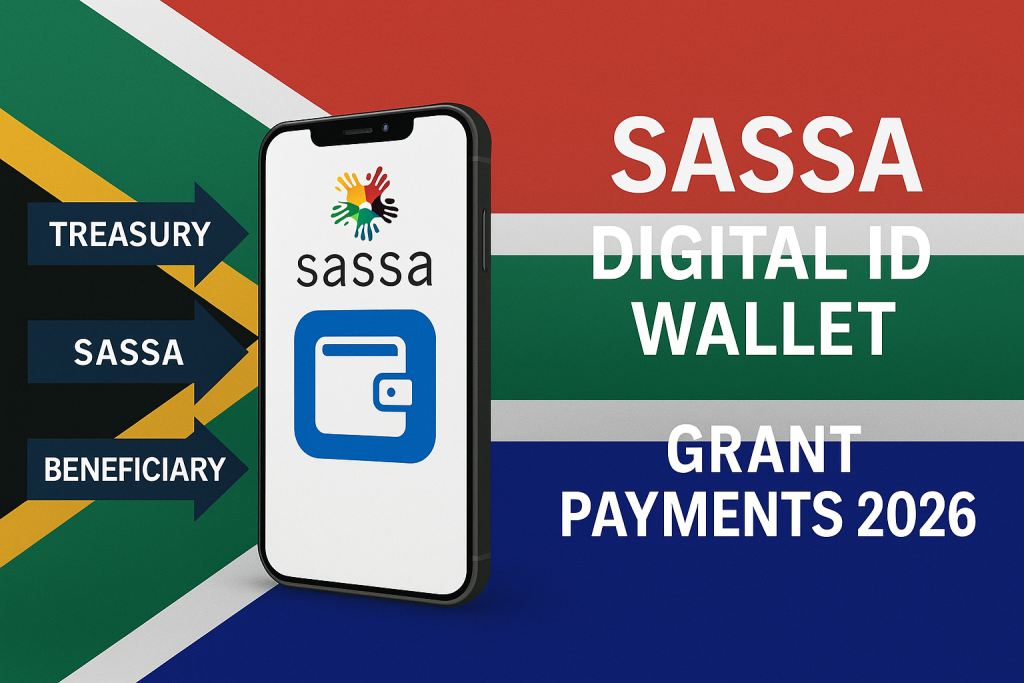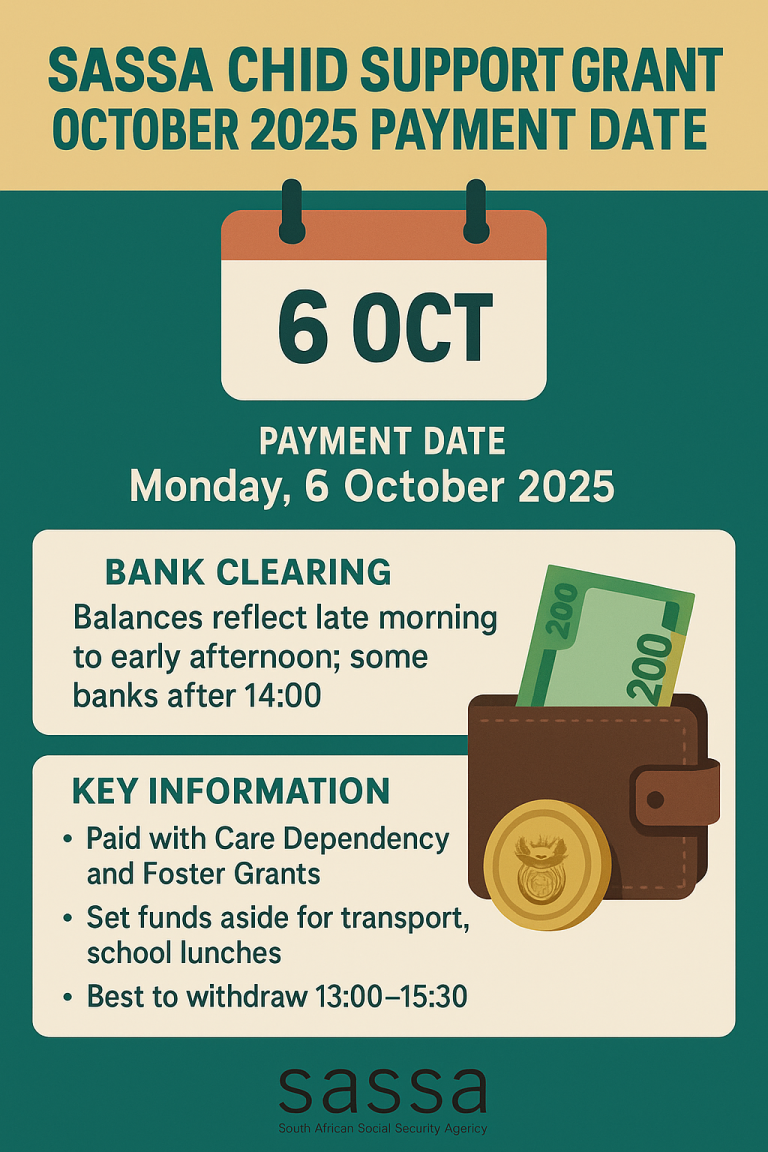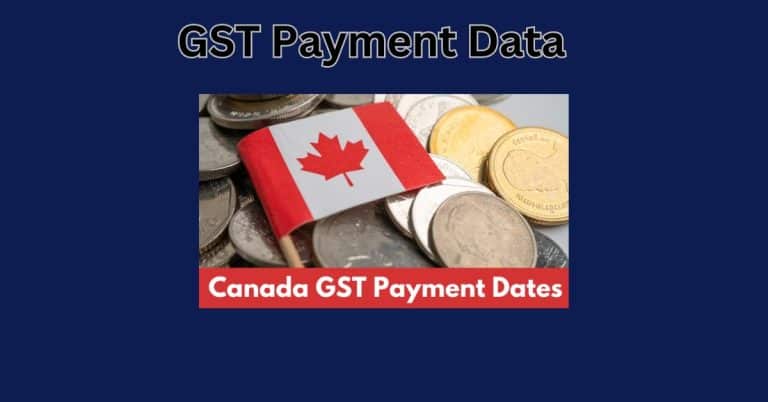SASSA Eyes Digital ID Wallet for Grant Payments by 2026
South Africa’s social grant system is one of the largest on the continent, supporting more than 18 million beneficiaries every month. For many households, SASSA (South African Social Security Agency) grants are the only reliable income stream. But despite its importance, the system continues to face fraud, inefficiencies, and payment delays that undermine trust.

Now, government officials are working with the Department of Home Affairs and the South African Reserve Bank to design a new solution: linking SASSA grant payments to the forthcoming national Digital ID Wallet. If implemented, this would transform the way grants are distributed, replacing outdated card systems and reducing opportunities for fraud. According to insiders, the pilot could launch in 2025 with a full rollout targeted for 2026.
Why SASSA Needs a New Payment Model
For years, the grant system has been hampered by technical glitches, ghost beneficiaries, and corruption. Payment contractors have struggled with logistics, leaving beneficiaries stranded when systems go offline. Fraud has been another major issue, with fake accounts and duplicate beneficiaries costing the state billions of rand annually.
The Digital ID Wallet is seen as a way to restore integrity. By tying each grant payment directly to a verified digital identity, SASSA can ensure that funds only reach legitimate beneficiaries. This would cut fraud, reduce payment errors, and build trust in the system.
Just as importantly, the reform is about convenience. Beneficiaries currently spend hours in queues or face high banking fees when withdrawing cash. A wallet system could allow them to receive, store, and spend grants digitally without extra charges.
How the Digital ID Wallet Will Work
The Digital ID Wallet is part of South Africa’s broader digital identity modernization program. Each citizen will be able to hold a secure wallet linked to their biometric ID and national records. For SASSA, this means every grant recipient would have a verified, government-issued digital account.
When Treasury transfers grant funds, they would go directly into these wallets. Beneficiaries could then access the money via:
- Mobile app (for smartphone users)
- USSD/SMS interface (for feature phones)
- Retail partner networks for withdrawals and purchases
The wallet would also integrate with major retail chains, enabling beneficiaries to buy food, electricity tokens, or pay bills directly — without the need for cash. This represents a significant step toward financial inclusion for low-income households.
Benefits for Beneficiaries & Government
The shift to digital wallets carries multiple advantages.
First, it directly tackles fraud and ghost accounts. Each wallet will be linked to verified biometric records, making it nearly impossible for imposters to collect grants.
Second, it ensures faster payments. Instead of relying on contractors, funds will move directly from Treasury to the wallet system. Delays caused by technical errors or intermediaries will be drastically reduced.
Third, the wallet expands financial access. Beneficiaries will not only receive grants but also gain a gateway into the formal financial system. With proper regulation, wallets could allow access to savings products, micro-loans, and insurance in the future.
Finally, for government, the system means better data. Real-time transaction monitoring will help Treasury and SASSA identify spending trends and detect fraud instantly.
Risks and Challenges
While the benefits are clear, the digital wallet system is not without risks.
One major concern is privacy. Linking grants to digital identities means government will have access to detailed spending patterns of millions of citizens. Without strong safeguards, this raises fears of surveillance and misuse of personal data.
Another risk is the digital divide. Many rural beneficiaries do not own smartphones or have reliable internet access. If the system is not designed with inclusivity in mind, millions could be excluded from grants they depend on. USSD-based access and retail partnerships will therefore be essential.
Technical capacity is also a concern. South Africa’s state institutions have struggled to roll out complex IT systems. If implementation is rushed or poorly managed, the wallet could suffer from the same glitches that plagued the earlier CPS (Cash Paymaster Services) model.
Timeline and Pilot Plans
According to early drafts, the pilot program will likely begin in 2025 with limited rollout in selected provinces. The Department of Social Development is expected to focus first on Gauteng and KwaZulu-Natal, given their high beneficiary numbers and relatively better infrastructure.
By 2026, officials aim for national rollout covering all 18 million grant recipients. The plan will also include training sessions for beneficiaries on how to use digital wallets, and partnerships with NGOs to assist the elderly and rural populations.
Global Lessons
South Africa is not alone in exploring digital welfare systems. India’s Aadhaar-linked direct benefit transfer has cut fraud dramatically by tying subsidies to biometric IDs. Nigeria has also experimented with e-wallets for agricultural subsidies.
The key lesson from these experiences is that infrastructure and education are as important as technology itself. Countries that invested in awareness campaigns and low-tech access channels saw much higher adoption rates. South Africa will need to follow a similar path.
Guidance for Beneficiaries and Policymakers
For beneficiaries, the message is clear:
- Stay informed about registration requirements.
- Ensure that personal IDs and contact details are up to date with Home Affairs.
- Prepare to use wallet systems, whether via smartphone or USSD.
For policymakers, three steps are critical:
- Privacy protection: Enact strong laws to safeguard beneficiary data.
- Inclusivity: Guarantee offline access channels and retail partnerships.
- Transparency: Communicate rollout plans clearly to avoid confusion.
Conclusion
The Digital ID Wallet proposal could mark a turning point for South Africa’s grant system. By cutting fraud, reducing delays, and giving beneficiaries financial access, it offers a modern solution to old problems. But it also carries risks especially around privacy and digital access that must be addressed.
If implemented successfully by 2026, the wallet could do more than just modernize payments. It could transform social grants into a platform for empowerment, linking millions of South Africans to the digital economy for the first time.






